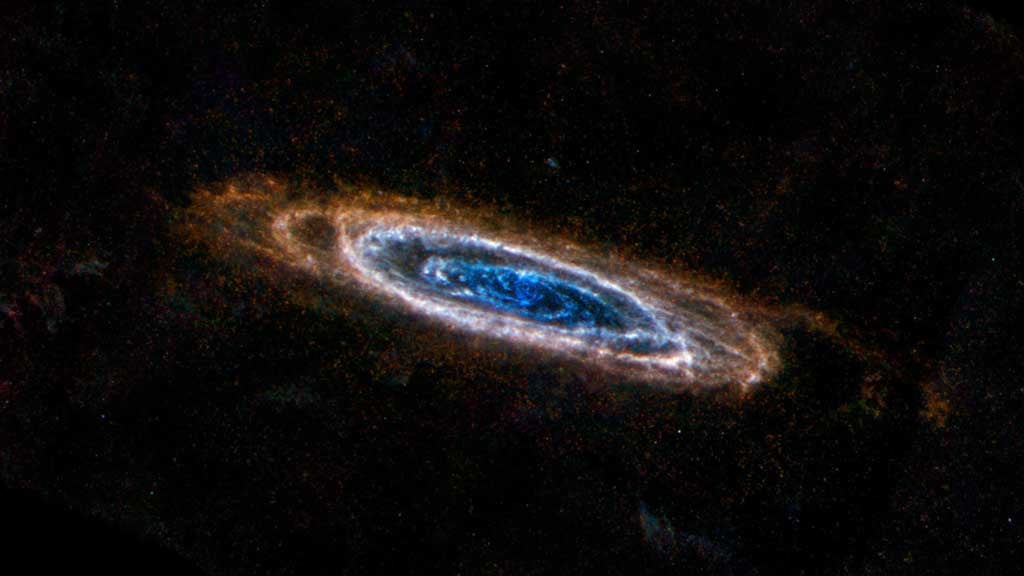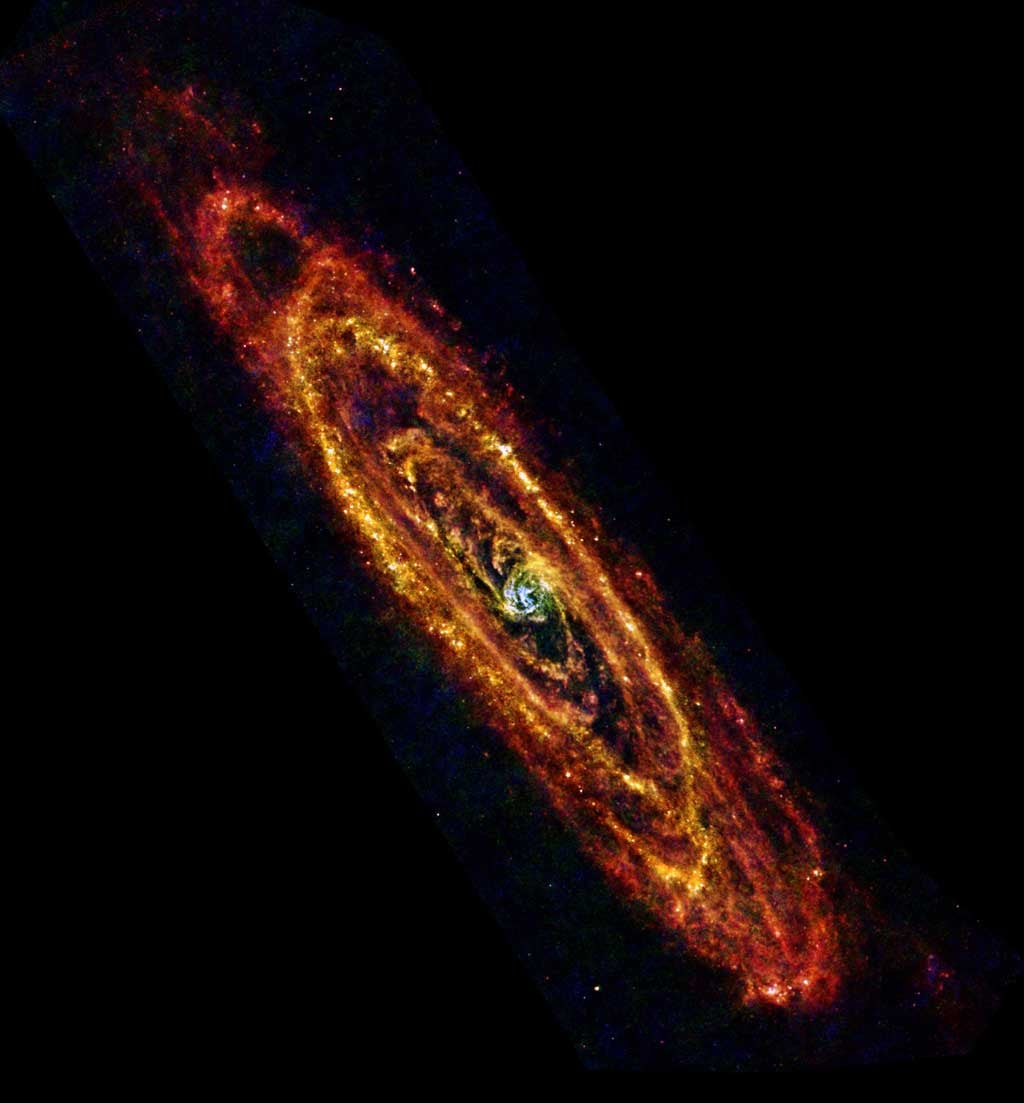Two new eye-catching views from the Herschel Space Observatory are fit for a princess. They show the elegant spiral galaxy Andromeda, named after the mythical Greek princess known for her beauty.
The Andromeda Galaxy (M31) lies 2 million light-years away, and it is the closest large galaxy to our Milky Way. It is estimated to have up to 1 trillion stars, whereas the Milky Way contains hundreds of billions. Recent evidence suggests Andromeda’s overall mass may in fact be less than the mass of the Milky Way, when dark matter is included.
Herschel, a European Space Agency mission with important NASA contributions, sees the longer-wavelength infrared light from the galaxy, revealing its rings of cool dust. Some of this dust is the coldest in the galaxy — only a few tens of degrees above absolute zero.
In both views, warmer dust is highlighted in the central regions by different colors. New stars are being born in this central crowded hub and throughout the galaxy’s rings in dusty knots. Spokes of dust can also be seen between the rings.











